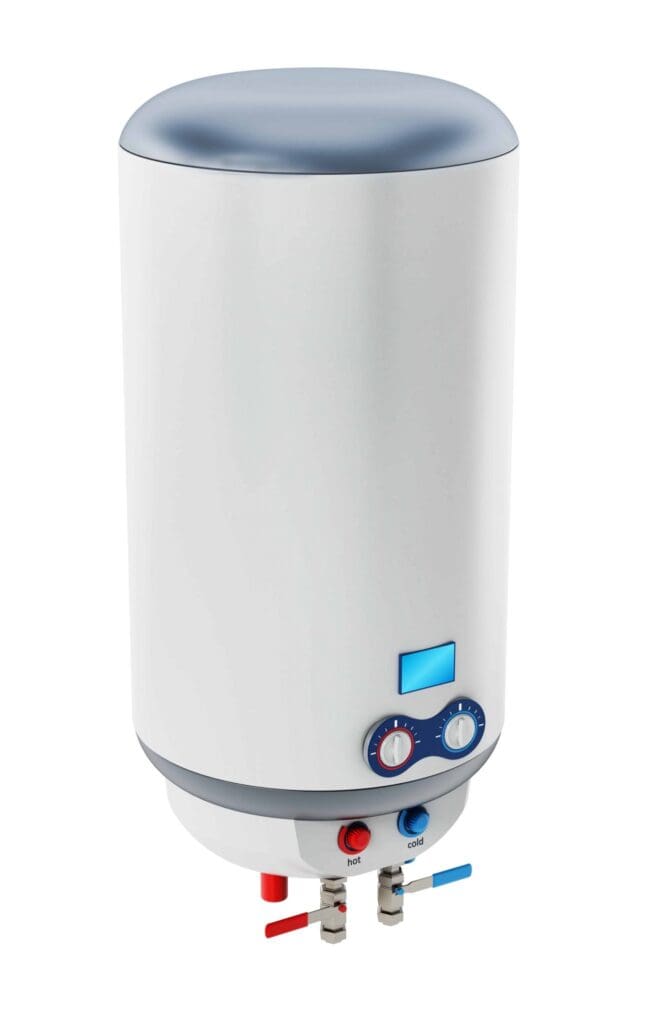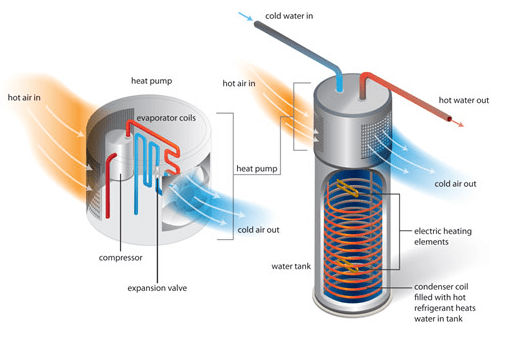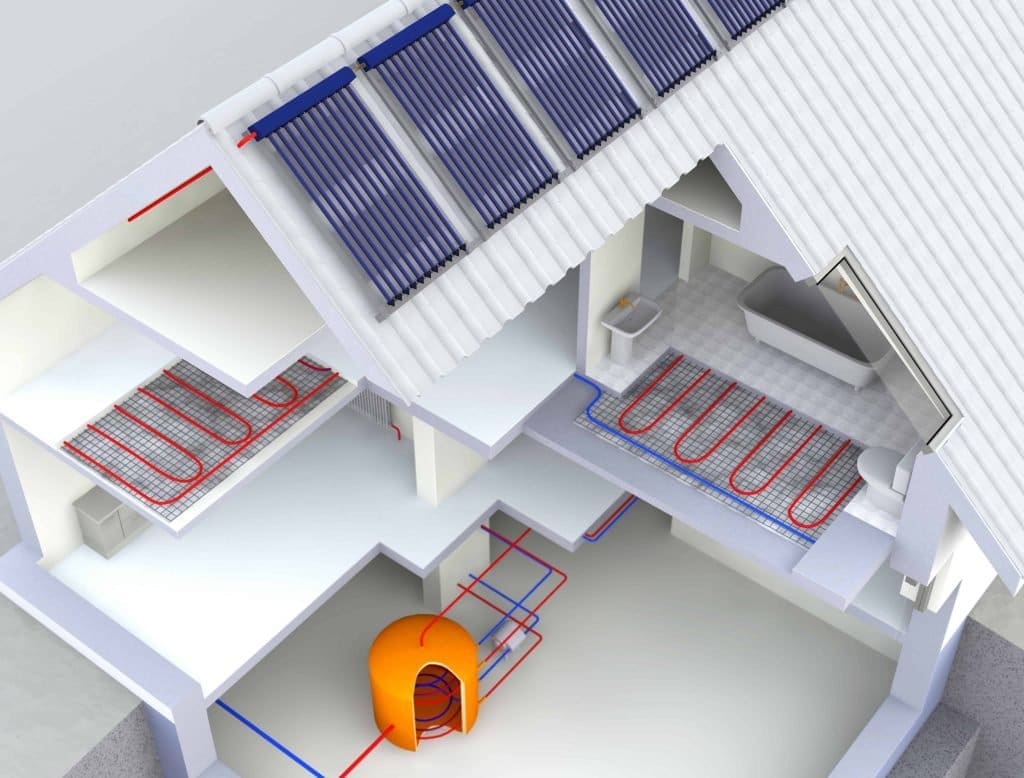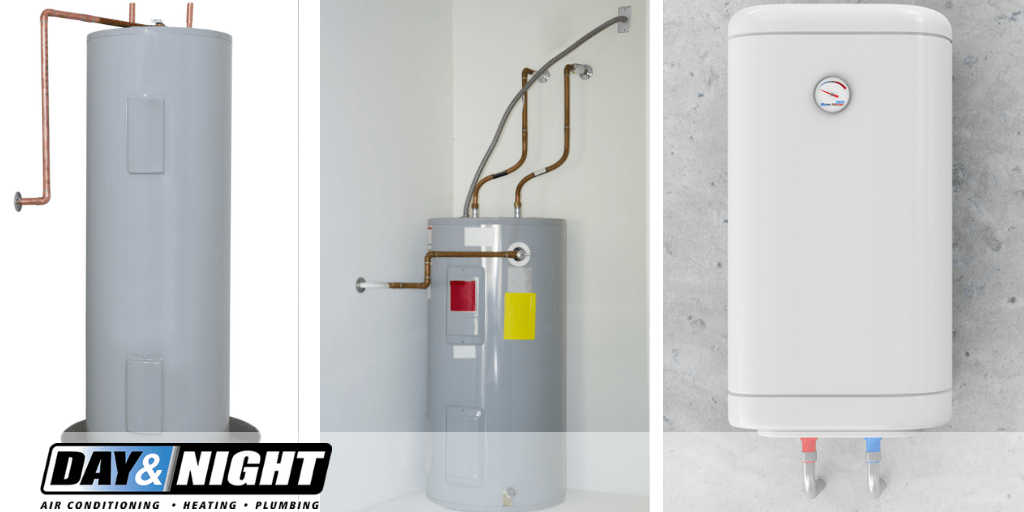Whether you like the idea of green technology, saving money on monthly utility bills, need a new system, or all of the above, there are many types of hot water heaters to meet your needs. From quick-heating coils and solar-heated tanks to heat pumps and gas-condensing technology, water heaters employ a range of technologies to deliver more energy efficiency and lower energy costs.
New government efficiency standards established in 2016 mean most homes, which use water heaters holding 55 gallons or less, will see only a modest, 4-percent improvement in energy efficiency with a replacement model. Tankless heaters on the whole already met those standards. Homeowners will see the most significant difference in larger-capacity water heaters, where new technologies offer the ability to trim utility bills 25 to 50 percent.
Prices vary from about $800 for installation of a storage tank system to $3,000 or more for a solar-power system, depending on the type, size/capacity, and installation requirements. Most also come in electric and gas models. The following is some helpful information about the types of water heaters available. You should consult a professional plumber in Phoenix before purchase to ensure that you get a good fit for your needs and your physical space. If you have more questions, you can see some differences between tank and tankless water heaters.
Conventional Storage Tank Water Heater

The most-used type of water heater in the U.S. is one with an insulated storage tank that holds between 30 and 80 gallons. About half of American homes use gas-heated tanks, while 41 percent use electric heat. A storage tank system works day and night to maintain the temperature you set through a gauge that works like a thermostat. When the water temperature drops below the fixed level, the heater turns on until water reaches its target temperature again. This constant cycle explains why water heaters account for 20 percent of a home’s utility bills.
Gas models come with a bigger price tag, but cost less to run and use less energy than electric models. A tank’s limited capacity, however, means you must wait to heat more water once you use the contents, and heating can take up to an hour. The lifespan of a storage tank system is typically 10 to 12 years. Maintenance is not required, but it can help you squeeze more life out of your tank by removing sediment and scales from minerals, which helps reduce corrosion and reduces the popping noise in water heaters. Water heater maintenance involves draining and cleaning the tank once or twice a year.
Benefits
● Least expensive system
● Generally easy to install for DIY homeowners
Drawbacks
● Expensive to run due to constant temperature fluctuations
● Limited capacity means you’ll run out of hot water if the tank is too small
Tankless Water Heater (On-Demand)

Also called an “on-demand” water heater, the tankless model uses super-heated coils to flash-heat water as you need it. Families can have all the hot water they need, as long it’s not all at once. These heaters are more energy-efficient than a traditional tank, but provide an average of only about 3.5 gallons of heated water each minute. One workaround is to install multiple units, each dedicated to a specific use, such as a dishwasher or clothes washer.
A tankless water heater works best in homes that use gas as the primary energy source. A gas-powered system starts around $700; electric models start at about $200. This water heater lasts 20 years or more, and its various parts should be cleaned annually. We can handle all types of water heater services, including tankless water heater repair.
Benefits
● Significant savings in energy bills
● Readily available hot water
Drawbacks
● Tankless water heaters that use gas are more expensive
● A low flow rate means limiting water use to one appliance at a time.
Heat Pump Water Heater (Hybrid)

image credit: https://bit.ly/2pHgW1F
A heat pump water heater is unique in that it does not heat water directly, but instead pulls the needed heat from the air and ground. The electricity it does use is for delivering that heat to the water, which is up
to 60 percent more energy efficient than using power to heat the water.
They are called hybrids because you can set them to switch to standard electric heat during those times of high hot-water use. Be aware that the pump is located on top of the unit, so you may need up to eight feet of vertical space. Like conventional storage-tank heaters, its lifespan is about the same, ten years or longer, and it also needs annual cleaning.
Benefits
● Significant energy savings
● Great savings in utility bills
Drawbacks
● Expensive up-front cost
● Not for cold climates (not a problem in Arizona)
Solar Power Water Heater

With a climate that’s nearly always sunny, a solar water heater makes sense for those who live in the Phoenix area. Drawing energy from solar panels on the roof of your home, this water heater uses a closed-loop system with heat-conducting material to warm water in the tank.
There’s no need to worry when the rainy season hits because solar panels generate heat on both cloudy and cold days; many systems also come with a backup for those who live in areas where the sun is not as sure a thing. An insulated tank and a solar collector make up this type of system, with the tank installed either on the roof with the solar panels or in your yard.
There are two types of active units which use pumps to deliver water, and two types of passive systems which use gravity. Active systems work directly or indirectly to circulate water (direct) or antifreeze (indirect) through solar collectors and into a storage tank. The indirect system also uses a heat exchanger to heat the water.
One type of passive system is an integral collector storage system. It features solar collectors in the tank that heat water before delivering it to the home through the force of gravity. A thermosyphon system is the second type of passive system; it uses solar collectors lower in the tank to heat water, causing it to rise, before sending it on its way. Because these systems have tanks, they should be cleaned annually. Homeowners can expect 15 to 20 years of service from a solar water heater.
Benefits
● Highly energy-efficient
● Much lower electric bills
Drawbacks
● Most expensive system
Condensing Water Heater
For families using gas-heated water, a condensing water heater is an excellent option. This system works like a funnel to collect the hot exhaust, which includes water vapor, from your home’s natural gas system. It cools this exhaust to the point where the water vapor condenses, 140 degrees F. This hot water is drawn through a coil at the tank’s bottom and heats the water in the tank.
Because it mainly uses fumes from gas burned by other appliances or the HVAC system, only a minimum of “new” energy is needed, so you should notice significant savings with this water heater, both in energy use and utility costs. Condensing water heaters typically come with tanks that hold more than 55 gallons, so this system works well for larger families who use more hot water. It too uses a tank that calls for annual cleaning.
Benefits
● Highly energy efficient
● Larger tanks mean plenty of hot water
● Utility cost savings
Drawbacks
● Not readily available as a smaller unit
● Not a good choice for homes that are not gas-fueled
Contact Us Today
With such a wide array of features, you may find it difficult to choose between the many different types of water heaters that are available. Day & Night Air are professional plumbers in Phoenix who can help you choose the one that works best for your family and your budget. Contact us today to schedule a consultation.

